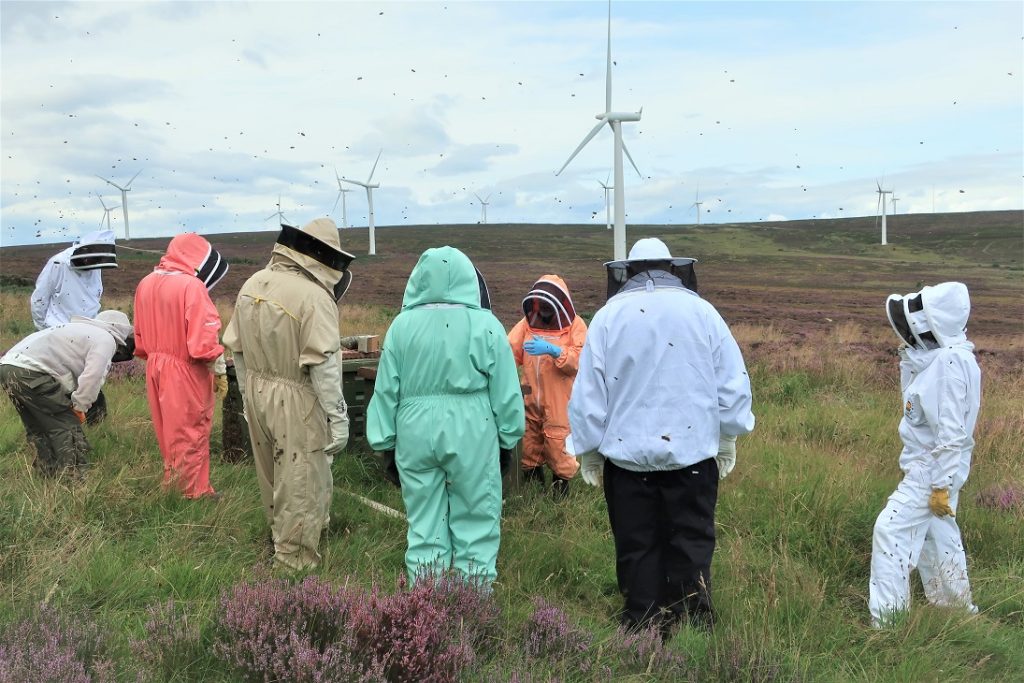
Sunday 20th August was warm with temperatures in the high teens and the promise of sunshine. The latter disappeared around noon but the day was perfect for Moray Beekeepers’ Association’s annual heather picnic and visit to bees on the moor. It hardly seems like a year since our last outing. Once again it was hosted on the very beautiful Drummuir Estate by landowner and beekeeper Torquil, https://www.beelistener.co.uk/beekeeping-in-scotland/heather-picnic-on-drummuir-estate/. A great team organised the perfect afternoon for 30 beekeepers including Linton and me. Some of us went up onto the moors to see Gordon’s bees, while others stayed down at the BBQ area near the Estate offices and chatted. It was a very jolly event with lots of conversation, and fun over the raffle prize draw later. These events are sources of great information exchange and finding out the latest beekeeping news.
BBQ.
We enjoyed a delicious BBQ with top quality food served including corn on the cob and various salads. Markus’ speciality cucumber and dill salad was on again and in high demand, and the chocolate-dipped strawberries and marshmallows on skewers were mouth-watering and irresistible. The catering was all very professional with Markus testing the temperature of the burgers before taking them off the BBQ to serve. But then he is a Public Health Specialist Doctor!
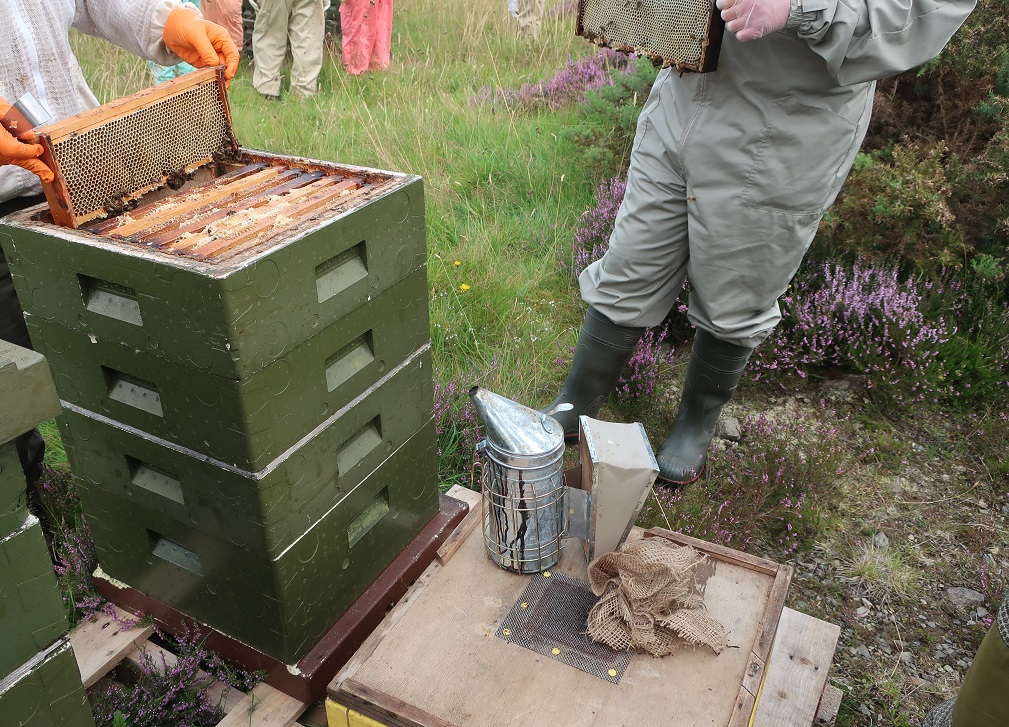
Up on the moors, with the glorious backdrop of purple and silvery white wind turbines blending into the scene, it was breezy and the delicate perfume of heather filled the air. We had been invited by Gordon to look inside some shallow supers to see the progress and rapid filling during a splendid nectar flow.
Smith Hives.
Gordon Duncan is a bee farmer with 150 colonies all now in polystyrene Smith hives ready painted to blend in on a heather moor. Smith hives are quite popular up here in the north of Scotland. They are rectangular rather than square like most other hives in use in the UK. They were designed by Mr. Willie Smith, a Scottish beekeeper from Innerleithen in the Borders, so that they could be easily be transported to the heather and he could fit more of them in his lorry than National hives. They have top bee space which may make them easier to handle, but extra care must be taken not to place honey supers directly onto the ground as the frames are closer to it and more easily contaminated.
The frames have short lugs and only Smith shallow super boxes will fit on these hives. They are single-walled and the brood chambers hold 11 frames with 50,000 cells to give you an idea of capacity, The frame size is 14” x 8”. Being smaller these hives are easier to construct and use a bit less wood/material than other types.
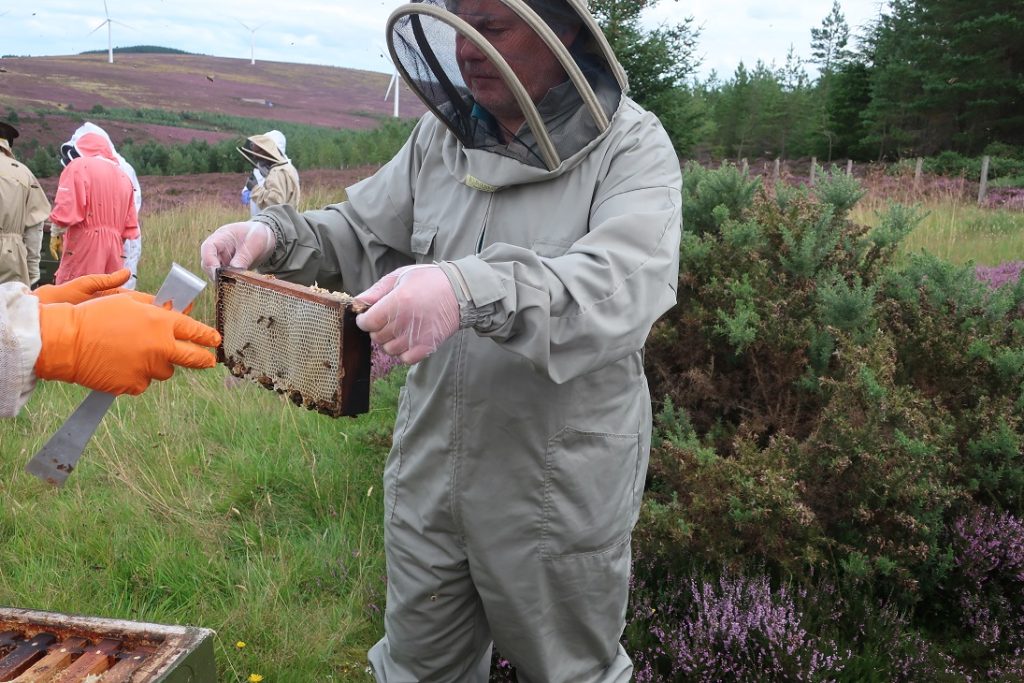
The nectar flow is good this year despite a dry June. July’s constant rain made up for it and the heather has never looked better. Several people have remarked on this. Gordon’s supers are filling nicely and the frames are just about ready to be capped. He will remove all his colonies from the heather by the second week of September. He tests water content with a refractometer and harvests just at the point of capping which is a clever trick to reduce the work and mess of uncapping.
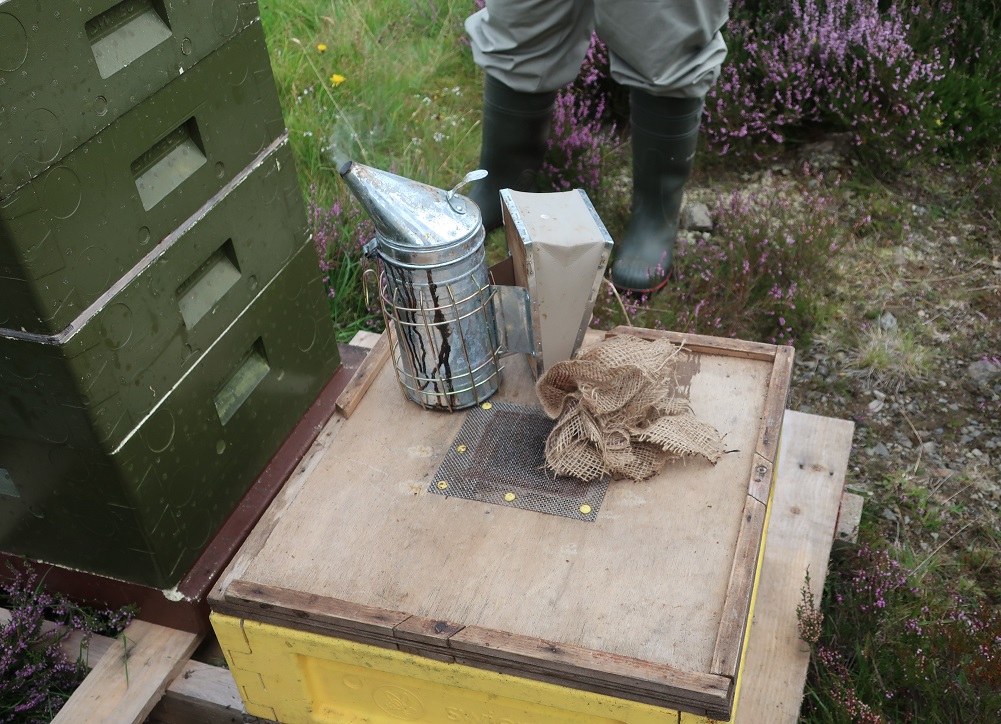
This season, all the colonies are headed by new Carniolan queens. They are docile bees that work well on the windy moors when the summer is ending and the nights are chilly. All the colonies are on a deep brood box with a second shallow brood box which is commonly known here as a brood and a half. Gordon will over winter them on a single brood box and he will feed sugar syrup and treat for varroa as soon as the bees come off the hill. He will harvest the honey on the moor so that the hives are easier to transport home again. The colonies we saw all had two supers on but of course some are stronger and do better than others. The smoker was lit and ready but I didn’t notice it being used. You want to use as little smoke as possible around honey supers.
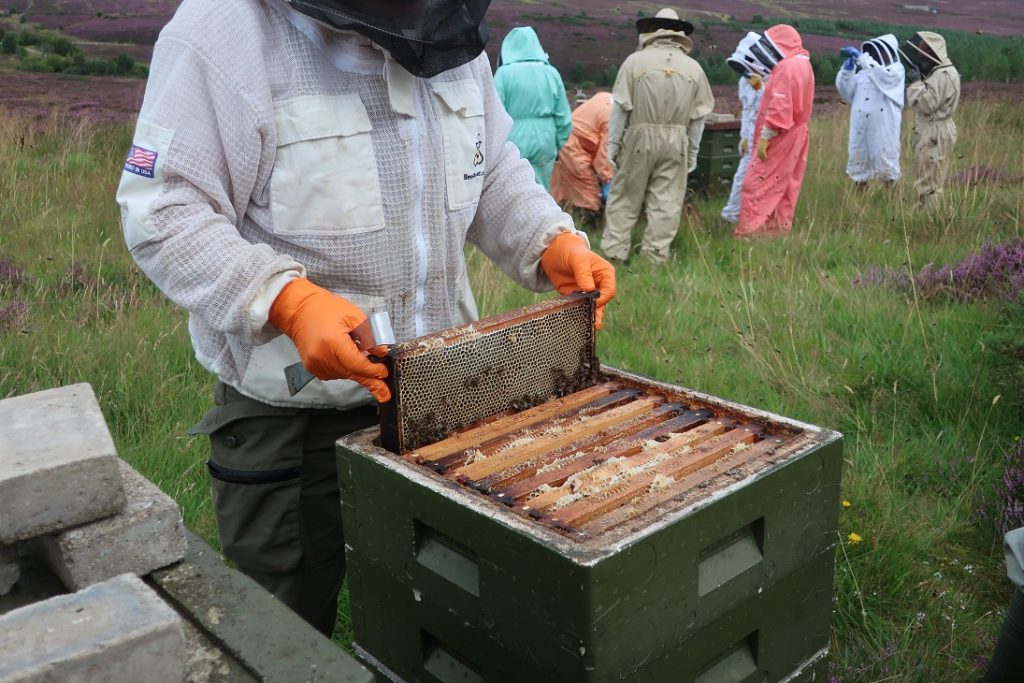
During the month or so that the bees are on the moors Gordon doesn’t open the brood boxes. He checks on the filling supers, and the need for more, but leaves the bees to do their job which is difficult enough in moorland conditions without stressing them further. The heather season is hard on bees as conditions can be harsh with cold winds and lower temperatures.
Preparation is Key to Success.
Preparation is key and having new queens is Gordon’s main strategy. He operates swarm prevention by requeening colonies early in the season with new queens. This ensures that his queens continue laying later in the season when older queens have generally stopped laying. New queens of the current year mated between May and July don’t reach their egg laying peak till later in the season1.. Having a large amount of brood laid now means that the bees don’t store honey in the brood boxes and so they are forced up into the supers. It relies on the beekeeper feeding the bees on return from the moors though.
Gordon also makes sure that the colonies are strong before moving them to the heather. Most of his stock forage on oil seed rape/canola crops earlier in the season. Although the honey is now popular and in demand, Gordon also uses this honey flow to get foundation drawn out so bees at heather concentrate on filling those frames and not spending energy drawing them out.
Disappointment and a Surprise.
I had a great day and came away with lots of things to think about for next year’s bee season. I was hoping to have come home over the Grantown road and Dava Moor to marvel at the heather but we had to retrace our journey and stop at a layby on the Elgin side of Forres to pick up my reading glasses. We’d been up early to take a colony of bees to friends in Keith and we stopped so I could check that the bees were alright. When I needed my glasses next they were nowhere to be found and I realised that they must have been on my knee when I got out of the car. Last year I mislaid my camera on the Dava moor but luckily found it next day unharmed by weather. Would I be so lucky with my glasses? I thought so till we pulled in to the layby. The most enormous combine harvester that I have ever seen was lumbering slowly ahead of us. Bad luck for the driver and me though; his brakes were on fire and he pulled in to the layby just ahead of us pulverising my new glasses to glittering glass and fragments of green.
If only we had not stopped earlier at the wrong layby…. I’ve just picked up another new pair which are lighter and even better than the others, and my optician gave me a generous discount when he heard about the combine harvester.

The glasses debacle was quickly forgotten when I went to see the bees. After a day out, I often walk round the apiary to check on the bees. I was astounded to find the bait hive occupied so late in the season. I had seen bees sniffing round the entrance the previous week but thought it was because I had just cleaned it out on return from the out apiary. I’d placed it on a woodpile till I could decide where to store it for winter. The swarm is a small cast but I have put it in a poly hive on a few frames with insulated wide dummy boards as I ran out of nuclei. I will be moving it gradually to the old site of the colony that went to Keith. Rather than feed syrup now and risk robbing, I’ve given them some shallow frames full of honey from a healthy colony to boost and give them the best chance of survival. I shall find out if the queen is laying, and if they look healthy, I might unite with them with another colony or nuc. Beekeeping is full of surprises.
Reference: Couston, R, (1972) Principles Of Practical Beekeeping, Northern Bee Books.
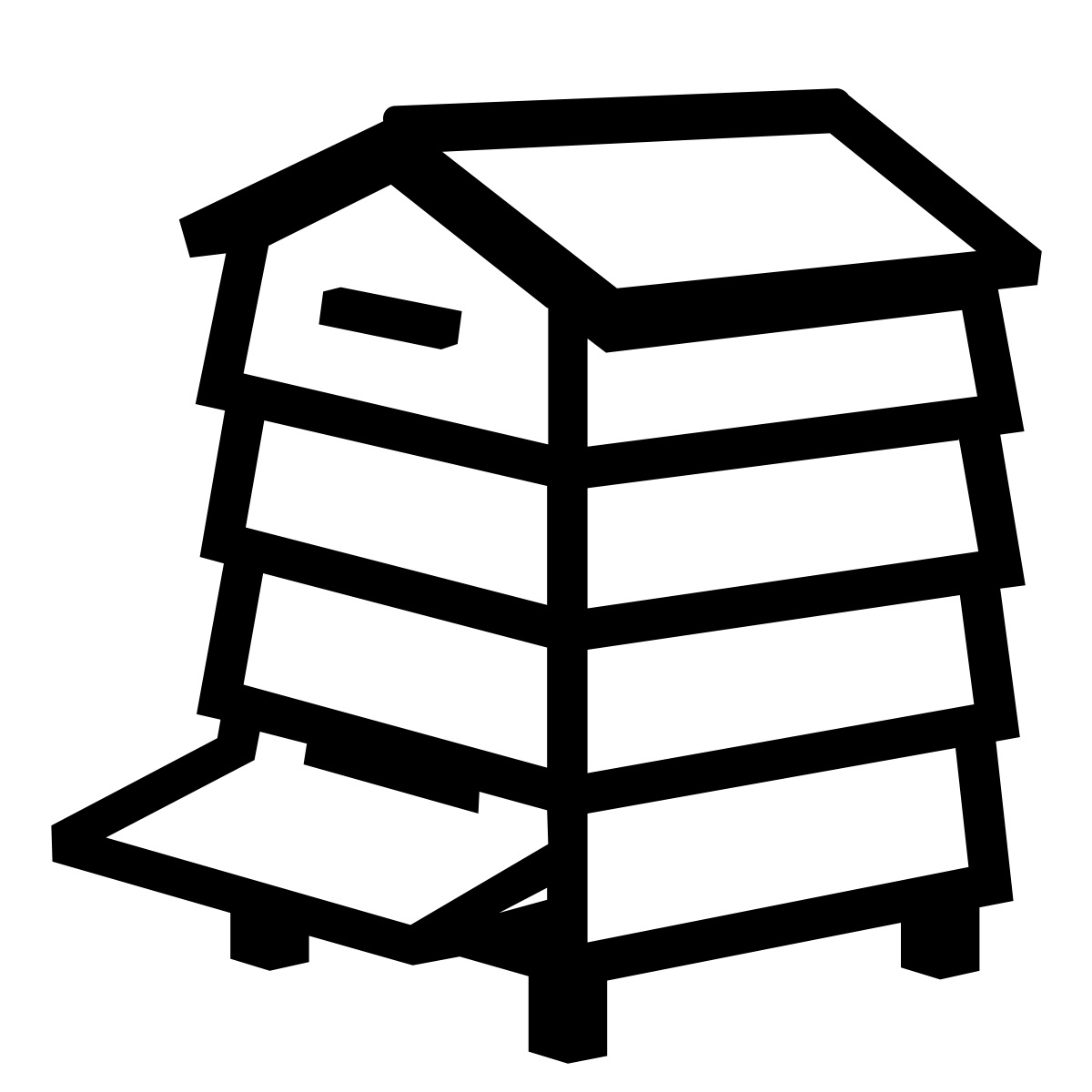
Thank you, Ann, for the glimpse of the successful methods used by Gordon Duncan to get a crop of heather honey. I write “glimpse” because your photos show so nicely his setting and his methods. The little, late summer swarm made a good decision to move into YOUR bait hive… and thereby set itself up for good help in surviving the coming winter.
Thank you for commenting, Tom. Yes, everyone has their own style of beekeeping for the different conditions, and it is good to know how a good crop can be obtained. The venue is not too far from Ben Rinnes and the site that you visited in 2016.